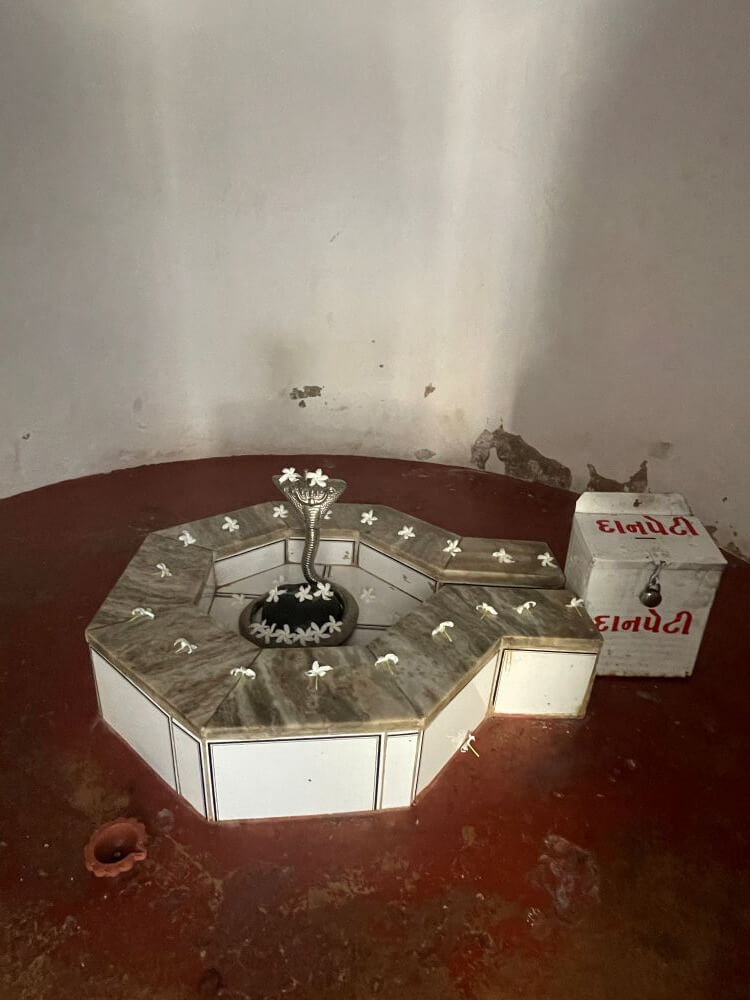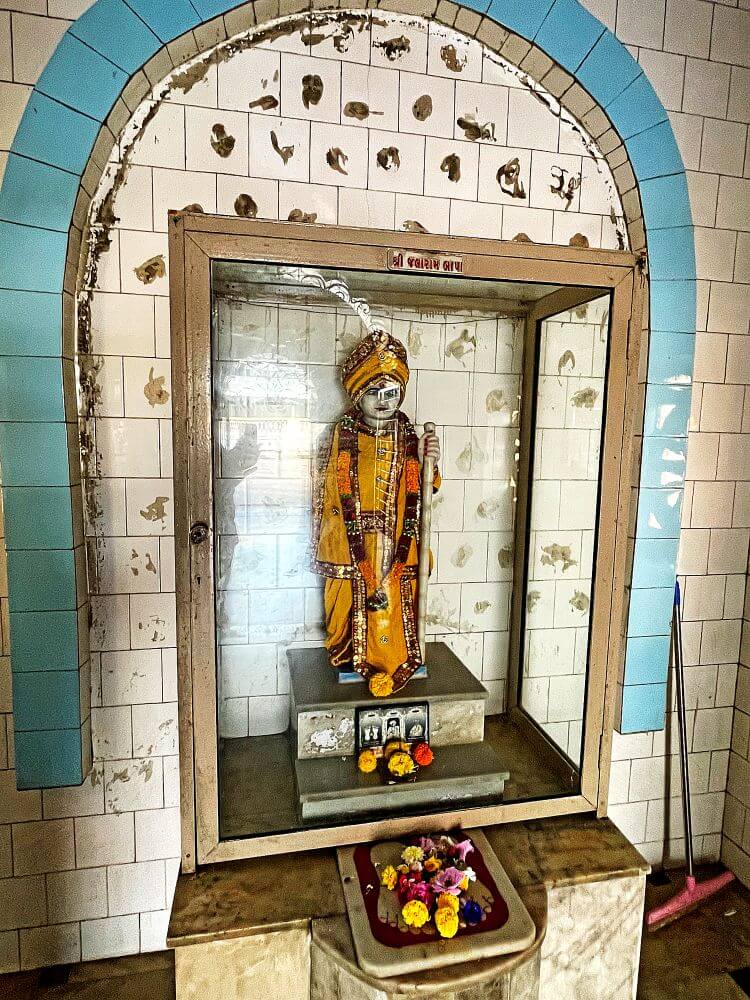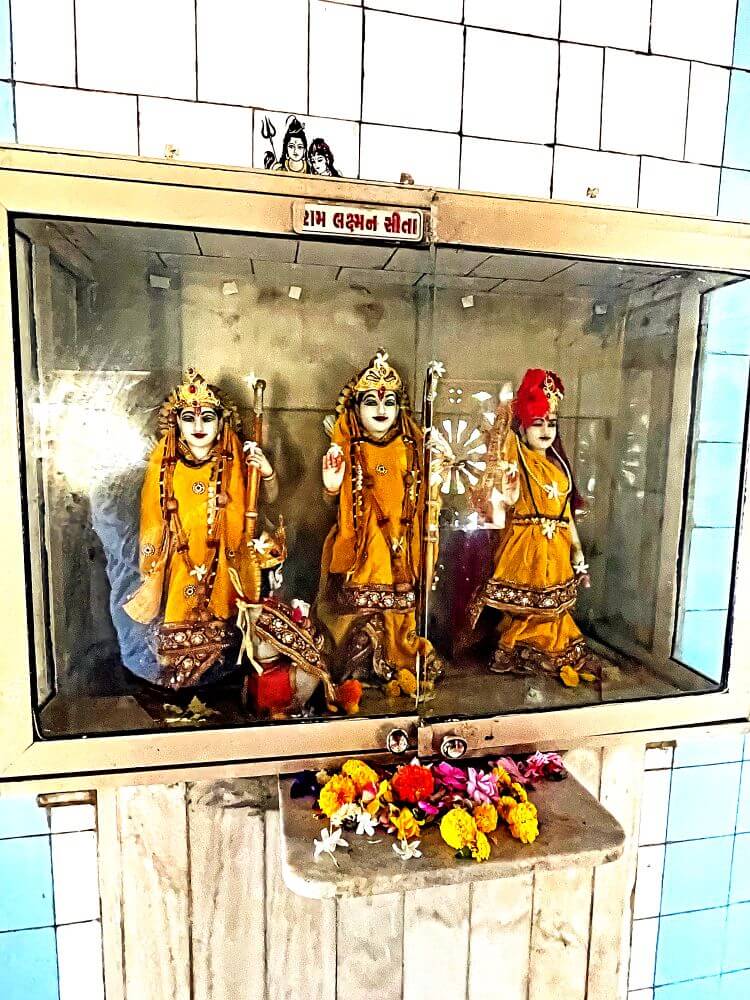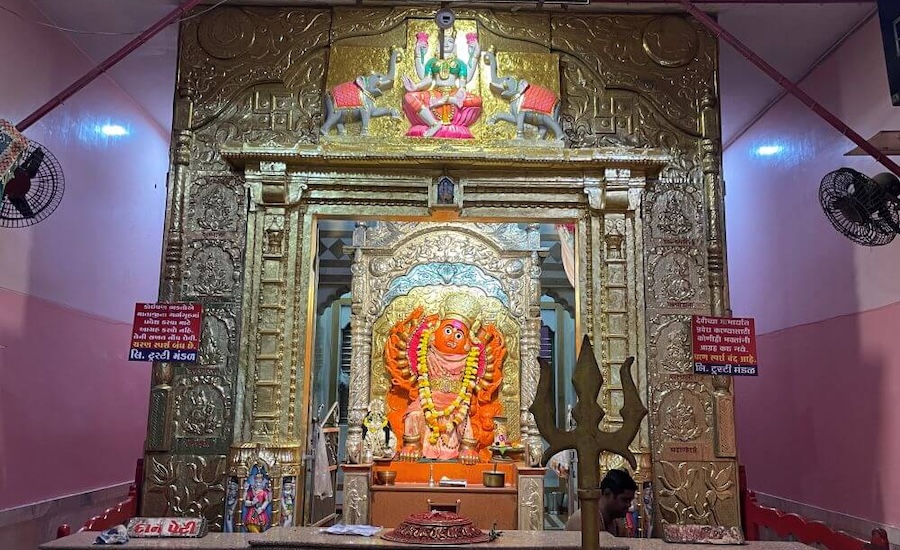
 The Kanakeshwar Mahadev Temple in Palsana, Surat district, is a site of great historical and religious significance. Once part of the ancient Maurya, Satavahana, and Gupta empires, this temple is revered for its self-manifested (swayambhu) and awakened (jagrut) shivling (lingam of Lord Shiva). Locals believe it dates back to the Pandava era, and the temple’s unique feature is the presence of a shrine dedicated to Lord Shiva within its dome. This rare architectural element attracts numerous devotees, especially during Mahashivratri.
The Kanakeshwar Mahadev Temple in Palsana, Surat district, is a site of great historical and religious significance. Once part of the ancient Maurya, Satavahana, and Gupta empires, this temple is revered for its self-manifested (swayambhu) and awakened (jagrut) shivling (lingam of Lord Shiva). Locals believe it dates back to the Pandava era, and the temple’s unique feature is the presence of a shrine dedicated to Lord Shiva within its dome. This rare architectural element attracts numerous devotees, especially during Mahashivratri.
The name Kanakeshwar has several explanations in local lore. One story attributes it to Shiva as the deity who grants prosperity (kanak meaning gold). Another legend connects the temple to Yudhishthira of the Pandavas. In the Mahabharata authored by Sage Ved Vyasa, the Virata Parva describes how the Pandavas lived incognito during their exile in the kingdom of King Virata, known as Matsya Desha. During this time, they assumed different identities to conceal their true selves. In the first chapter of the Virata Parva, verse 24 records Yudhishthira’s declaration: ‘Sabhastharo bhavishyami tasya rajño mahatmanah। Kanko nama dwijo bhootva
matakshah priyadevanah।।’ This translates to: ‘I possess the skill of playing dice, and I enjoy this game. Therefore, I will become a Brahmin named Kanka and serve as a member of King Virata’s royal court.’  The region referred to as Matsya Desha, where Yudhishthira lived under the name Kanka, is believed to correspond to present-day Bharatpur, Alwar, and Jaipur in Rajasthan. It is said that during his stay in this region, Yudhishthira established a lingam of Lord Shiva under the name Kanka. This lingam came to be known as Kankeshwar, and over time, its name evolved to Kanakeshwar.
The region referred to as Matsya Desha, where Yudhishthira lived under the name Kanka, is believed to correspond to present-day Bharatpur, Alwar, and Jaipur in Rajasthan. It is said that during his stay in this region, Yudhishthira established a lingam of Lord Shiva under the name Kanka. This lingam came to be known as Kankeshwar, and over time, its name evolved to Kanakeshwar.
The Kanakeshwar Mahadev Temple is situated near a large square in the village of Palsana on the banks of the Mindhola River. The original temple was renovated in 1954. Surrounded by a spacious compound with ancient trees, the temple has a grand entrance arch. Inside the complex, there is a small shrine dedicated to Sankatmochan Hanuman with a vermilion-coated idol of the deity. The idol features a crown and a moustached face, adding a distinct charm. Adjacent to Hanuman’s shrine is a smaller idol of Bhavani Mata.
The main Kanakeshwar Mahadev Temple stands nearby. The temple has a modern yet simple design, with a metal-roofed canopy in front, a prayer hall (sabhamandap), and a sanctum (garbhagriha). The canopy area is equipped with seating for devotees and houses a small shrine dedicated to Baliyadev, a local deity considered a protector of farmers, livestock, and tribal communities. Baliyadev is often regarded as an aspect of Shiva. A roughly carved Nandi idol sits near this shrine, while another Nandi idol is placed at the entrance of the prayer hall.
A roughly carved Nandi idol sits near this shrine, while another Nandi idol is placed at the entrance of the prayer hall.
Inside the sabhamandap, the walls are adorned with small marble tiles, and the dome features painted depictions of Vishnu’s ten avatars (Dashavatar). Marble idols of Ganesha, Hanuman, Ram, Lakshman, Sita, and other deities are enshrined along the walls. A notable addition is the marble idol of Jalaram Bapa, a revered saint from Gujarat, known for his tradition of feeding the needy in Virpur. Devotees worship him alongside other deities.
The sanctum, built with marble, houses the large Kanakeshwar shivling. The octagonal shalunka (base) of the lingam is metallic, with the lingam itself carved from stone. A large brass cobra hoods the lingam, while a copper vessel hangs above it, continuously dripping water for abhishek (ritual bathing). A garland of six silver umbrellas adorns the lingam. Nearby, a silver mask used during festivals is also displayed.
The dome above the sabhamandap has a hemispherical design, while the sanctum’s spire follows the Nagara architectural style. The spire features a central tall tower flanked by smaller subsidiary spires (Urushringa), symbolising cosmic energy. The topmost tier includes a two-layered amalaka (stone disc) and a kalasha. Carvings of deities, sages, and celestial beings adorn the spire.
A unique feature of this temple is the Shiva Gufa (Shiva’s cave) within the spire. Cement stairs lead to a small arched doorway measuring approximately 2 feet by 3 feet. Devotees must kneel to enter the spire’s inner chamber, which contains a small shrine with a shivling. This rare design element enhances the temple’s spiritual allure.
Several smaller shrines within the temple complex enshrine local deities represented by stones. On Mondays, Mahashivratri, and Hanuman Jayanti, the temple sees a large influx of devotees. The spacious courtyard hosts religious events, including annadan (free food distribution), and other community gatherings.



